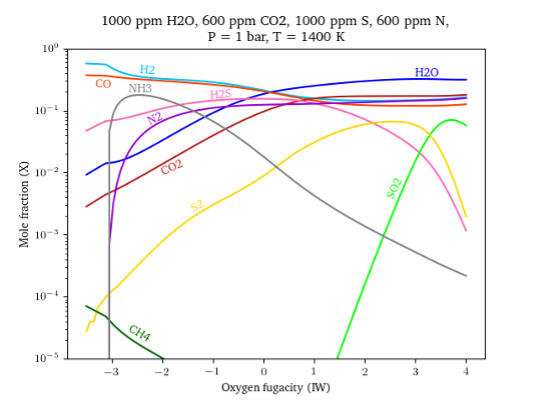Department of Earth Sciences
Service Navigation
TRR170: Late Accretion onto Terrestrial Planets
The major theme of the collaborative research centre TRR 170 'Late Accretion onto Terrestrial Planets' is to understand the late growth history of the terrestrial planets, from the last giant collisions with Moon- to Mars-sized planetary embryos to the subsequent late bombardment with smaller objects. This period of planet formation is critically important for understanding the formation of the terrestrial planets and their chemical differentiation, and for constraining the parameters that controlled their subsequent evolution. To address these questions and improve our current understanding of the late growth history of the Earth, its Moon, and other terrestrial planets from 4.5 to 3.8 billion years ago, TRR 170 applies a multidisciplinary approach that combines expertise in geochemistry and petrology, remote sensing and planetary geology, and geodynamic and impact modelling. TRR 170's research programme will provide novel insights into the timing and rates, chemical budget, and geodynamic implications of late accretion and will constrain the physicochemical boundary conditions during this time interval.
Specifically, we will (1) constrain the timing and distribution of basin-forming impacts on the Moon to improve basic parameters of the cratering chronology in the inner solar system, (2) quantify the mass, provenance and chemical composition of accreted materials between 4.5 and 3.8 billion years ago, (3) determine how the compositions of these materials were modified during accretionary impacts and magma degassing, (4) assess how accreted material was distributed within the growing terrestrial planets and how it changed their subsequent evolution, and (5) develop quantitative models for the thermal evolution of the terrestrial planets, including the formation of and interaction between magma oceans, crust and early atmospheres in the relevant time interval. The combined results will refine our fragmentary understanding of several key processes during the early evolution of the terrestrial planets, such as the role of giant impacts in volatile loss processes and core formation, the development and evolution of magma oceans, the transition to solid-state convection, homogenization of chemical and isotopic heterogeneities, and the cooling history of the terrestrial planets. Besides its scientific goals, TRR 170's dedicated integrated graduate programme will educate the next generation of planetary scientists, with a particular emphasis on the multidisciplinary character of modern planetary sciences.
Crust formation and outgassing on early Earth and Mars (C06)
We will investigate the coupled evolution of early crust formation and interior outgassing on Earth and Mars under changing mantle redox states. Volcanic outgassing and volatile speciation in rising magma bodies will be treated simultaneously in our coupled, self-consistent model using mantle chemistry and volatile bulk composition as input and data from the geological record as constraints. To trace the evolution of volatiles in interior and surface over time, we will calculate the melt redox state from ultramafic to felsic compositions with respect to ambient temperature, dissolved volatiles, SiO2 and alkali content. We will furthermore extend our speciation analyses (so far in C-O-H system) to other volcanic gas phases such as halogens and sulfur species.

© Ortenzi
Chemical volatile gas speciation and atmospheric evolution on terrestrial planets
Subsequently to the magma ocean state, secondary atmospheres build up via early volcanic degassing of planetary interiors. The terrestrial planets Venus, Earth and Mars are believed to have originated from similar source material but reveal different present-day atmospheric compositions, pressures and temperatures. To investigate how such diverse atmospheres emerge, we have developed a model that allows us to compute the molar fractions of gases involved in volcanic degassing in the C-H-O-N-S system by using the mass balance method and Gibbs energy minimization. The model takes into account pressure, temperature, oxygen fugacity, melt composition and the effect of volatile species on each other.
We find that all the parameters mentioned above have a significant effect on the molar composition of the released gases and that hence varying parameters like planet mass, atmospheric pressure, tectonic regime, volatile budget or the abundance of heat sources can lead to significantly different atmospheric compositions and degassing rates.
Formation and evolution of crust on early Earth
After the magma ocean phase 4.5 Gyr ago, the radioactive elements K, Th, and U became the most important heat producing elements on Earth. Since their presence highly affect the heat budget of Earth and other terrestrial planets over large time spans, we have to trace their redistribution behavior in the mantle and crust as precisely as possible. In this study, we model partition coefficients depending on pressure, temperature, and melt composition based on Blundy and Wood (2003) by further developing their partitioning model and parameterize it to higher pressure ranges. The resulting code will be implemented into the global mantle convection code CHIC, which will help to determine the melting behavior and primitive crust formation rates of Earth and Mars. Together with an added mineralogical database we will explore the compositional mantle development. In addition, re-melting and differentiation processes of basaltic crust to more felsic material will mark the beginning of continental crust formation. With this, the project aims to create a statistical overview of crustal formation and recycling mechanisms, which will help to improve our understanding of global crustal development processes.

Participants in project TRR 170
Key Data
- Project number: 263649064
- Project term: Jan 01, 2020 - Dec 31, 2023 (2nd funding period)

